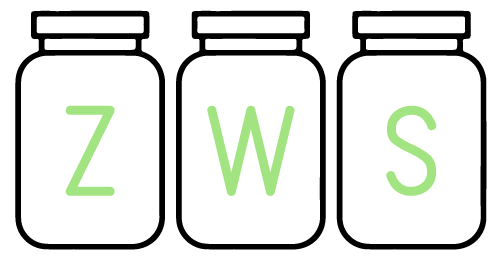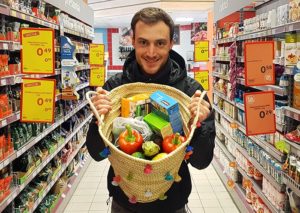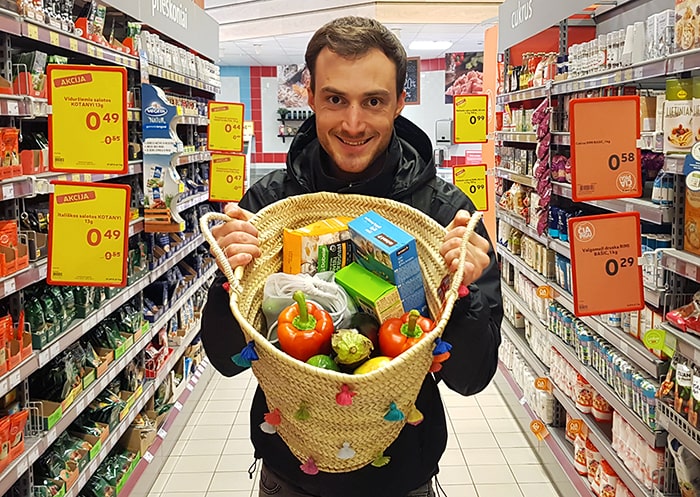
After watching a dramatic video about the waste crisis that we’re facing, you decide to do your groceries with less packaging.
Awesome!
But the last time you went to a supermarket, the pile of plastic you brought back home demoralized you about reducing your trash.
As a zerowaster, I love to do my groceries in bulk stores. Everything is made for easy groceries without packaging. But honestly, they’re not at every corner of the street.
When I need something quickly, my only option is to go to the nearest supermarket.
And guess what?
It’s possible to shop with less packaging and more sustainable in a supermarket!
Back in time, I was always in the pursuit of the cheapest products. I just had to compare the prices. Now that I’m looking for sustainable products, I’m doing the same comparison but with different indicators.
Here are my tips to shop more waste-free in a supermarket:
1. Hunt for bulk food
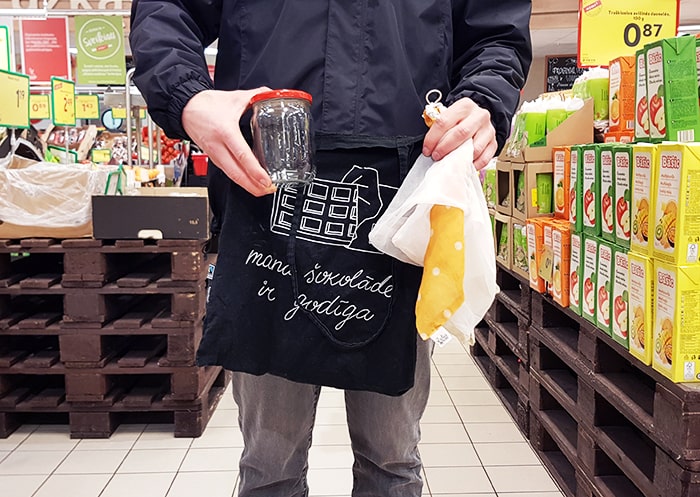
Buying food in a supermarket can be really challenging. That’s why I always take my sustainable weapons with me:
- 1 backpack
- 5 fabric bags
- 1 or 2 reusable containers
Now, my first step is to grab food that is not packaged!
Veggies & Fruits
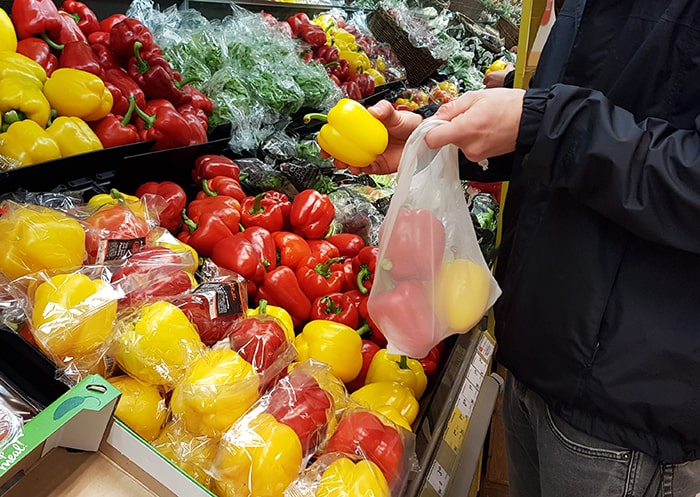
A lot of veggies and fruits are stored in bulk. For the big ones like paprika, zucchinis, or eggplants, I just shove them in my backpack. For the smaller pieces like tomatoes, potatoes, or onions I use the fabric bags.
Have you ever crossed that organic zucchini wrapped in plastic?
That’s because organic food must be isolated from other food contamination. What to choose in that case? It’s up to you. This scenario is quite rare anyway.
Choosing veggies and fruits according to their season and their country of origin has a way bigger impact. It doesn’t make sense to buy an organic apple coming from New Zealand when they are locally produced.
Bread & pastries
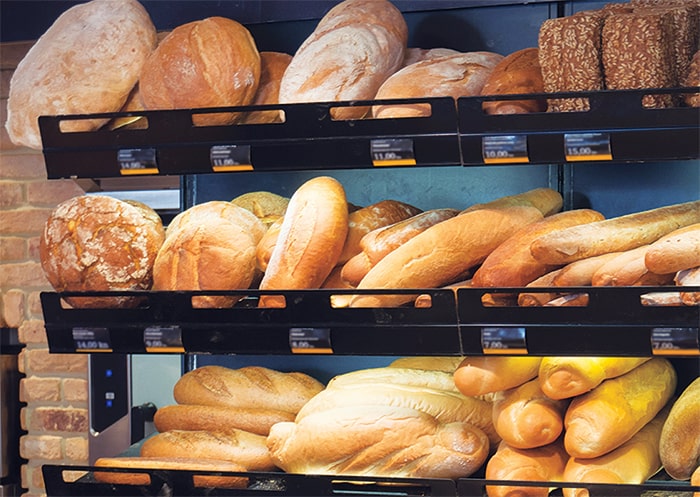
Bread and pastries are usually displayed without packaging in glass boxes. Even if there are paper bags for convenience, it’s so easy to wrap them in my fabric bags.
Meat & Fish
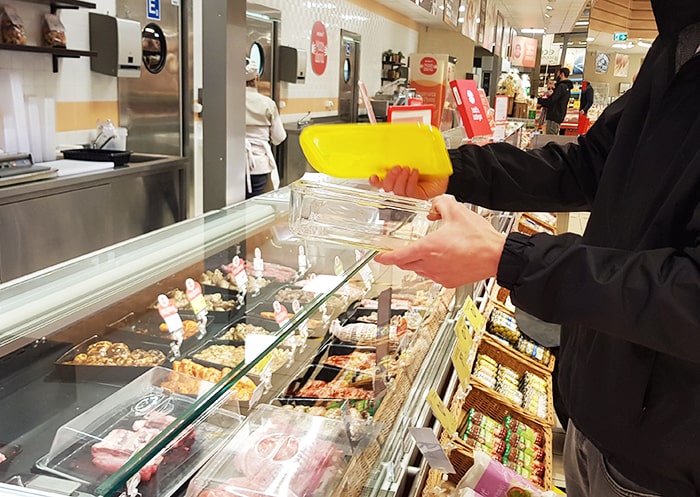
Big-sized supermarkets are equipped with fresh meat and fish corners. That’s where my container comes into action! I will ask if they can serve me in the container instead of in a plastic bag.
Nuts
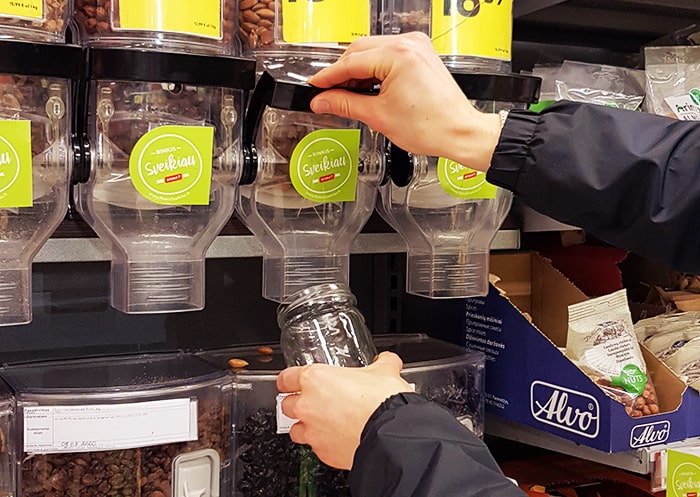
My supermarket offers a dispenser with a bunch of different nuts. Lucky me! So, I just fill up my fabric bags, and I’m package-free for the nuts.
2. Choose eco-friendly packaging
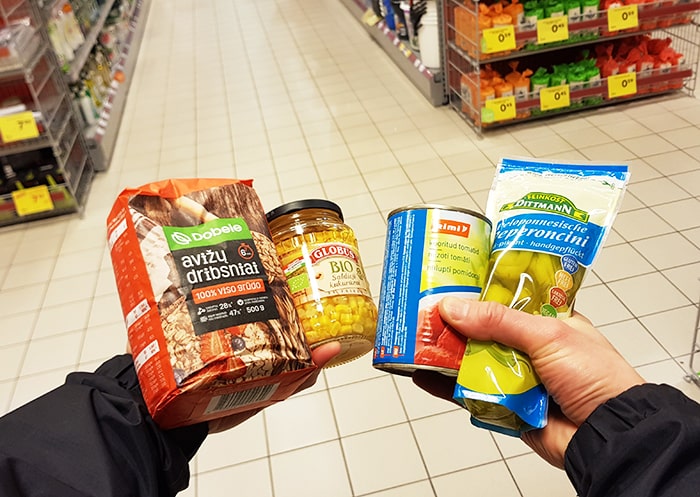
When there is no package-free option, I can still choose my products more wisely.
Paper
I always go for paper or cardboard as its compostable. And if I discard it in the correct bin, it’s even recyclable. Products like flour, sugar, or oat often come in a paper bag.
Glass
When it’s about drink bottles or conserved food, glass is the best deal! Food-grade glass can be recycled again and again without losing its properties. And when it’s empty, I can repurpose it as a container or as a nice pot for flowers.
Metal
Aluminum cans are also infinitely recyclable. But its production generates more carbon emissions than glass and the fancy painting contains a lot of chemicals. In a reasonable way, I also go for it. Especially if there is a deposit system.
Bio-plastic myth
Bio-plastic sounds like a solution to all our disposable packaging, right? I haven’t seen any in my supermarket yet, but apparently the new material is highly controversial. Labels are playing with a lot of terms like compostable, bio-degradable, or bio-based. In the end, it’s still plastic that only degrades in very specific conditions or that can be recycled only several times.
Wanna have a debate about what’s the most sustainable packaging?
Save your time. Producing any sort of packaging requires resources. Doing the best choice we can and opting for the less packaged option will make a difference.
3. Upgrade to large-size packaging
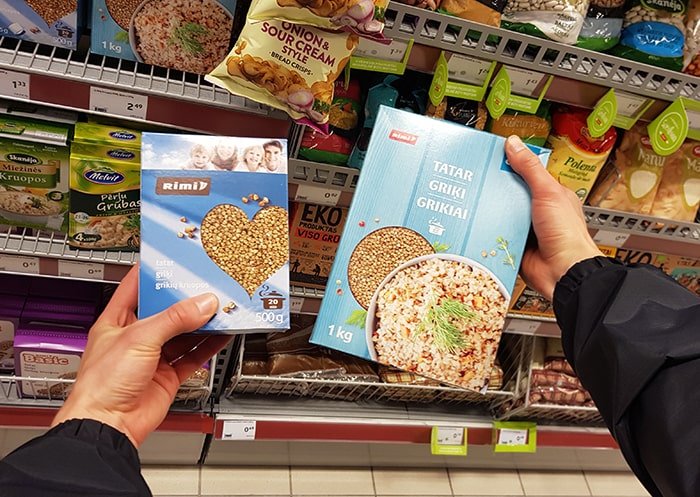
If I know that I’m consuming a specific product frequently, I can buy a bigger pack! It’s less packaging per kilo of that product.
Before buying it, I want to be sure that I’ll be able to eat it all before the expiry date. I don’t want to waste food.
For example, I used to buy a 70cl bottle of olive oil every 2 weeks. As olive oil does not expire, I bought a 5 liters jerrican of organic olive oil. The price per liter was cheaper and I don’t have to think about buying it for a few months.
4. Spot locally-produced food
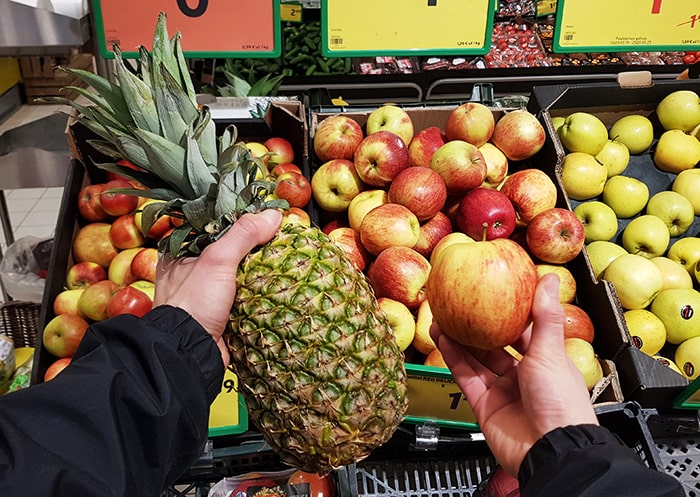
Did you find local food? Whether the product is packaged or not, it’s always the most sustainable choice!
Supporting local producers is not only good for the economy, but it also reduces the carbon footprint thanks to the smaller distance transportation.
Here’s a case: Even if supermarkets offer juicy exotic fruits all year, I will opt for locally-grown fruits. However, if I need a pineapple for a specific recipe, I’ll buy it. But not on a weekly basis.
5. Eat less processed
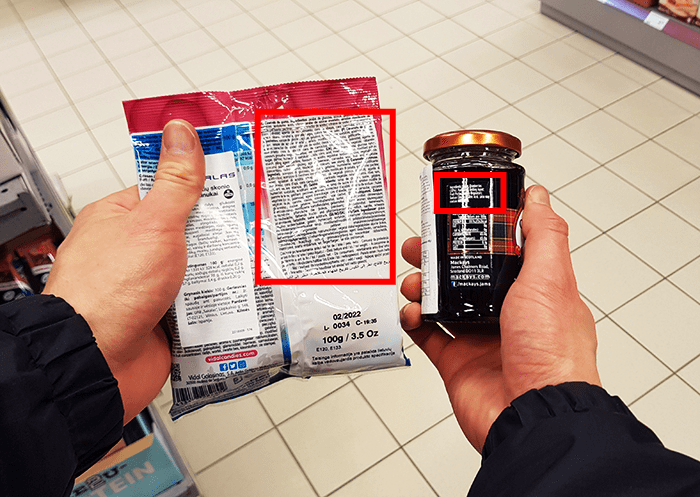
Have a look at the label of the product.
Do you see a long list of unpronounceable ingredients?
The more processing steps the product has been through, the more waste it has already generated. The packaging for the end-user is only the visible part of the iceberg.
Imagine if the brand “Mars” starts to sell their snack-bars without packaging. People rush on it thinking that its an eco-friendly product! But the production of this ultra-processed food used more resources than a packaged tablet of raw chocolate.
6. Go for home-made recipe
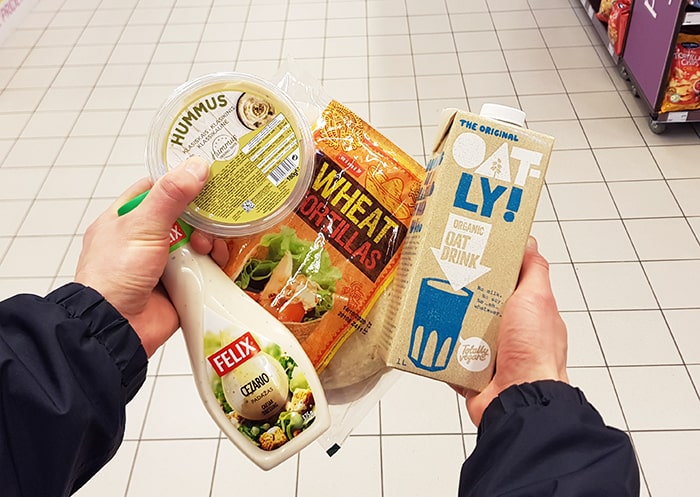
Most of the ready-to-eat food is packaged.
Did you try to make them at home?
I’m thinking about salad dressing, oat milk, guacamole, hummus, tortilla’s, protein bars, and so on.
A bunch of them only need 3 to 5 basic ingredients and a few minutes of your time. Next time you spot one of them, have a try to a quick and easy recipe.
Did I only mentioned food products?
Surprisingly, it’s also the case for a lot of household products! Have a look at some recipe for laundry soap, multi-cleaner, or even dishwasher tabs.
Last words
As we saw, there are many ways to buy more consciously in supermarkets!
If a bunch of us are doing better choices, suppliers will spot the new demand and offer more sustainable products.
But for now, they’re not making it easy for eco-minded people. Supermarkets still bet on convenience and temptation to make more profits.
Have you tried alternative shops?
Have a look at temporary markets, indoor food halls, or even local farmers! Buying food online is also more sustainable if it’s locally-produced and organic.
And maybe one day, a bulk shop will open in your neighborhood and your eco-friendly groceries will be far easier!
